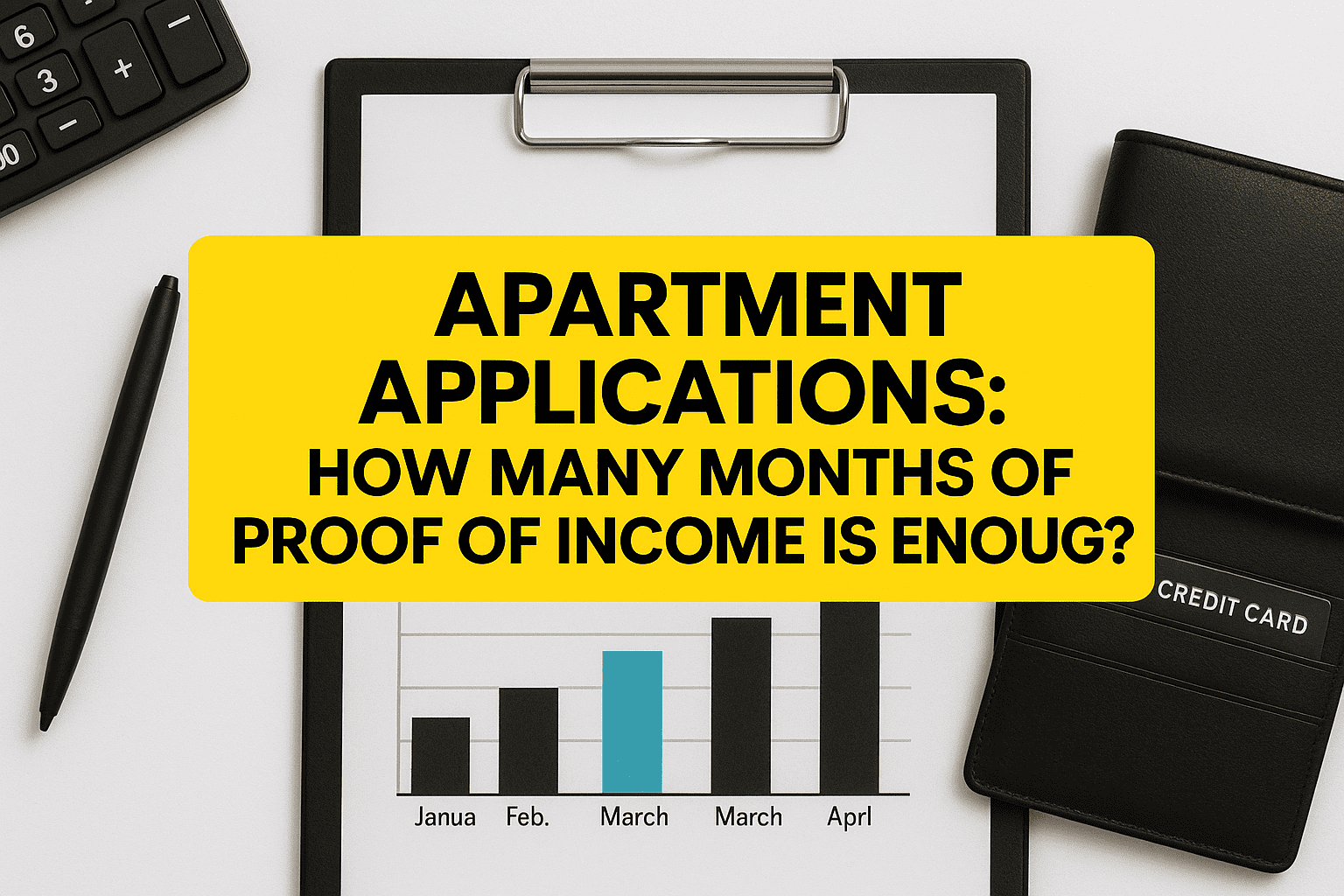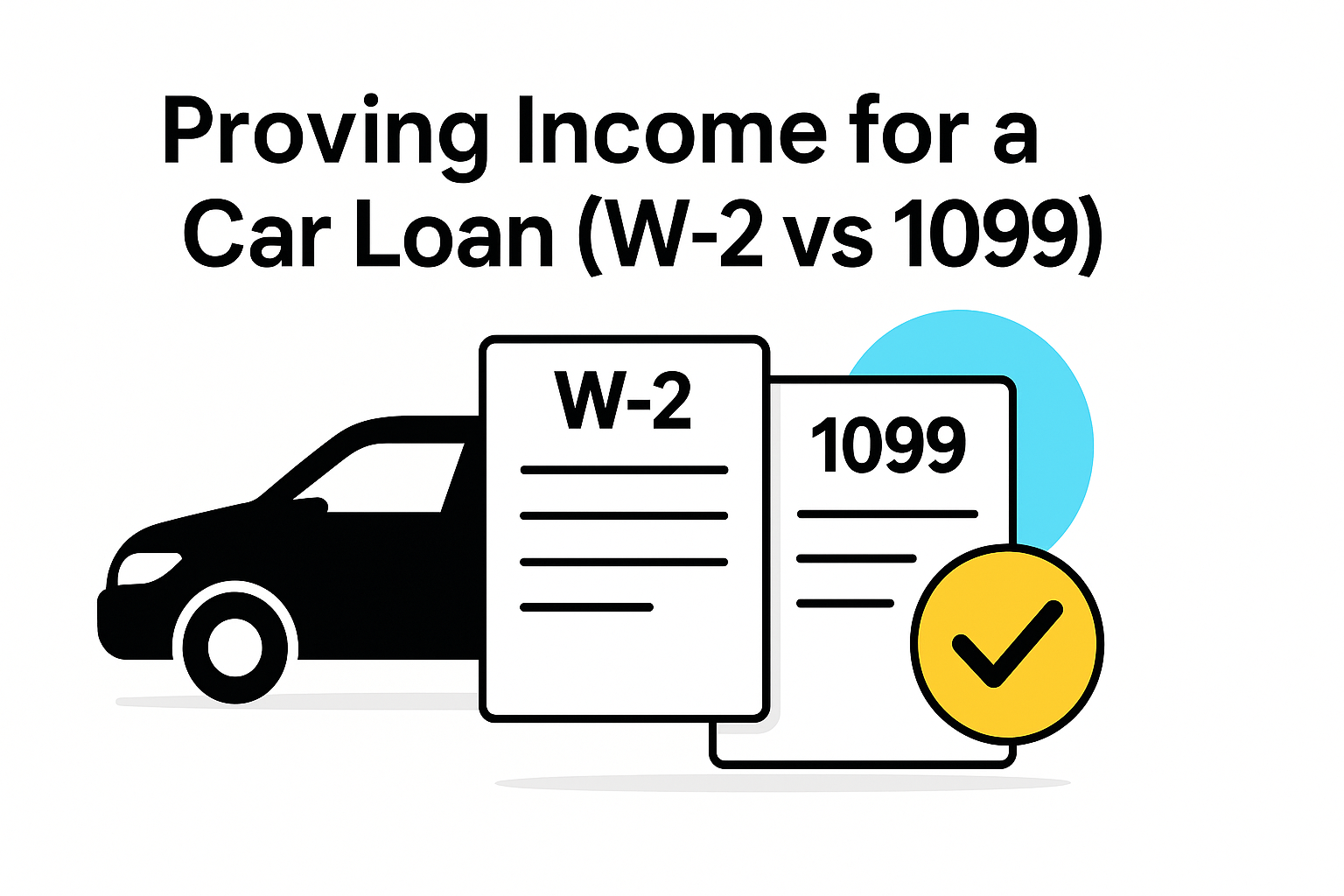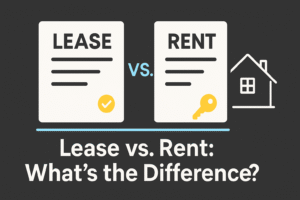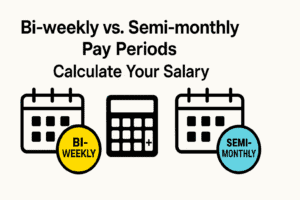Last updated: September 2025
By the end of this guide, you’ll know exactly how to prepare a compliant and persuasive proof‑of‑income packet for your next apartment application.
Finding an apartment often comes down to proof of income. Tenants worry about how many months of payslips or bank statements they must provide. The answer depends on your country, landlord and employment type, but there are patterns. In this guide we compare common requirements in the US, UK and Canada, outline what edits are allowed and prohibited, and show how professional formatting can strengthen your application. Our job at FinancialDocsProvider.com is to format and organise your documents—we never fabricate numbers or dates.
This article refines an internal draft and consolidates official guidance from recognised housing authorities and regulators. It is an editorial resource, not legal advice; always follow the requirements stated by your landlord, letting agent or programme administrator. :contentReference[oaicite:0]{index=0}
- Related Entities & Terms
- Pay stubs / payslips
- Bank statements
- W‑2, 1099 (US) / T4, NOA (Canada)
- P60, SA302 (UK tax forms)
- CFPB, FTC, IRS (US regulators)
- FCA, HMRC, GOV.UK (UK regulators)
- FCAC, CRA (Canadian regulators)
- Housing Benefit and affordable housing programs
- Employment letters & invoices
Regulators offer benchmarks that help answer the “how many months” question. Austin’s Housing and Planning Department requires at least two consecutive months of pay stubs within the last 90 days and up to six months of bank statements in some circumstances. The UK’s Housing Benefit guidance asks for the two most recent monthly payslips and bank statements covering the last two months. Canada’s newcomer housing guide notes that landlords may verify your employment, credit and income. These regional differences highlight why preparation matters.
What are the legal basics of providing proof of income?
Key point: Landlords have the right to verify that you can pay rent, and they must follow fair‑housing and privacy laws. You may organise and redact documents for readability and data minimisation. You may not change amounts, dates, names or any other material facts.
In the United States, federal fair housing laws bar discrimination while permitting landlords to check income. Programs like the Austin Development Incentive require two months of recent pay stubs and, for households with cash gifts or irregular income, six months of bank statements. Misstatements can lead to eviction. The CFPB and FTC commonly advise consumers to redact account numbers and similar identifiers but to avoid altering any financial figures.
UK tenants applying for Housing Benefit must supply their most recent payslips—five if paid weekly or two if paid monthly—plus bank statements for the last two months. Landlords and agents must respect GDPR principles such as data minimisation and purpose limitation and cannot demand excessive personal data. Under the Fraud Act 2006, forging pay stubs or statements is a criminal offence.
Canadian tenancy laws vary by province, but national guidance notes that landlords can ask where you work, check your credit and request proof of income. Many property managers look for two to three months of payslips or six months of statements for self‑employed applicants, though there’s no national standard. PIPEDA and provincial privacy laws require landlords to protect your information.
What “consecutive” means in practice. Consecutive documents are back‑to‑back with no gaps. If you are paid bi‑weekly, three pay stubs usually span about six weeks. If you are paid monthly, two payslips typically cover two months. When in doubt, provide an extra statement to show continuity.
What landlords may and may not request. Landlords may ask for proof of identity, pay frequency, gross or net pay, complete statements and employer contact details. They should not request protected‑class information, full Social Security numbers without necessity, or unrelated medical or immigration documents. If a request feels intrusive, ask the landlord to cite the policy or law requiring it.

Which edits are allowed?
Key point: Editing is packaging, not changing. You may improve legibility, protect privacy and arrange files so reviewers can find information quickly. All figures and facts must remain exactly as issued.
Allowed edits include merging multiple statements into one PDF, rotating pages, improving contrast, adding bookmarks or a table of contents, and redacting sensitive identifiers like account numbers or full Social Security numbers. Highlighting key figures or adding page numbers helps reviewers navigate your packet. Converting JPEG scans to PDFs is also acceptable. Each change should improve legibility without modifying the numbers, dates or employer names.
Practical redaction steps. Work from originals, not screenshots. Use a PDF redaction tool that deletes underlying text rather than drawing a black box. Redact only what’s necessary—typically the middle digits of account numbers and personal identifiers—so the document still reads clearly. Save a clean “reader copy” and keep the original unaltered file for your records.
Digital hygiene that helps. Enable OCR so figures are searchable, label files with dates (2025‑07_Payslip‑ABC‑Hospital.pdf), and compress large PDFs without degrading readability. If your landlord accepts password‑protected files, send the password via a separate channel.
What changes are illegal?
Key point: Any edit that changes substantive information—amounts, dates, payee names or the removal of pages—is fraudulent. Misrepresentations can lead to immediate rejection, lease termination and potential civil or criminal penalties.
Altering gross pay, adjusting deposit amounts or changing pay periods misleads landlords and may constitute fraud under US, UK and Canadian law. Replacing a gig‑economy payer with a traditional employer or erasing overdrafts on a bank statement is forbidden. Leaving out pages or transactions to hide gaps in income also signals tampering. In the US, affordable housing guidelines warn that material misstatements may cause immediate lease termination. In the UK and Canada, similar offences may lead to criminal charges and difficulty securing future housing.
Telltale signs reviewers look for. Inconsistent fonts, misaligned numbers, missing statement pages, altered running balances, incorrect tax withholdings, and metadata showing edits after the statement date are common red flags. Landlords may verify deposits against employer payroll cycles or request confirmations from issuers.
Bottom line. If a figure is wrong, correct it at the source—your employer’s payroll department or your bank—not in the PDF. Provide a short cover note if you need to explain a legitimate correction or a one‑off anomaly.
When do you need professional document formatting?
Key point: Professional formatting adds value when you have multiple jobs, irregular income or complex documentation requirements. It ensures your packet meets local standards and reduces the risk of avoidable errors.
Renters: Landlords typically require two to three months of pay stubs and bank statements. In the UK, Housing Benefit applications ask for the two most recent monthly payslips and two months of statements. Our service assembles these documents chronologically, redacts sensitive data and highlights key figures.
Borrowers: Auto lenders and mortgage underwriters may request tax returns, W‑2s, and several months of statements. We package everything into a clear dossier that lenders can review quickly. If documents are from multiple sources, we add a contents page so underwriters can jump directly to each item.
Self‑employed applicants: Affordable housing guidelines recommend six consecutive months of personal or business statements for self‑employed individuals. You may also need invoices, contracts and summary payment reports. We reconcile deposits with invoices, label irregular income and present a narrative of stable earnings.
Small‑business loans: SBA and similar programmes require profit‑and‑loss statements, tax filings and bank records. Professional formatting ensures that these diverse documents tell a consistent story without omissions and that dates align across sources.
Scenario 1 (salaried): Sarah is a salaried nurse in Chicago earning $4,000 per month; she’s applying for a $1,200 apartment. Her landlord asks for three pay stubs and two months of bank statements. Because her employer pays bi‑weekly, her three stubs cover about six weeks. After highlighting gross and net pay on each stub and grouping them chronologically, Sarah demonstrates that her income meets a 3:1 rent‑to‑income ratio. The landlord approves her application without follow‑up questions.
Scenario 2 (freelancer): Raj, a freelance graphic designer in London, invoices clients irregularly. His prospective landlord needs assurance that he can cover rent. Raj provides six months of business bank statements alongside invoices, a tax return and a brief letter from his accountant summarising his average monthly earnings. He annotates large, one‑off deposits to show which contract they relate to. The landlord appreciates the transparency and accepts him because the documents paint a clear picture of steady overall income.
Scenario 3 (mixed income): Amira in Toronto works part‑time and also receives a benefit payment. She submits two months of pay stubs, two months of personal bank statements, the latest benefit award letter and a short cover note explaining her hours increase next month. The package is complete, consistent and easy to verify, so the landlord proceeds to references without delay.
These examples show that the right documentation isn’t just about the number of months—it’s about demonstrating reliability through clear, organised records. Whether you’re paid weekly, monthly or through a patchwork of gigs, a well‑packaged proof‑of‑income packet tells a compelling story.
How does FinancialDocsProvider.com work?
Key point: We follow a structured, compliance‑first workflow: intake, reconciliation, formatting and delivery. Our goal is to make your documents clear and secure, not to fabricate information.
Intake: After you contact our team, we provide a secure portal for uploading pay stubs, statements and tax forms. We support various file types and protect your confidentiality. You’ll receive a checklist tailored to your situation and the region where you’re applying.
Reconciliation: We examine your files for completeness and consistency. If pages are missing, dates don’t align or the number of months is insufficient, we’ll let you know. We ensure you meet local requirements—such as two months of payslips and bank statements or six months of statements for self‑employed clients. When appropriate, we suggest a brief cover note to explain legitimate anomalies.
Formatting & redaction: We merge documents into a single PDF, rotate and crop pages, add a table of contents, redact sensitive data and highlight key figures. These edits enhance clarity without changing the underlying facts. We perform a final pass to verify page counts, dates and name consistency across the packet.
Delivery: We send you a ready‑to‑submit package via secure download, typically within 24–48 hours. For more details about our processes, see our about our process page or check our proof of income editing and pricing information. We never contact your landlord on your behalf and we never add, delete or alter financial figures.
What we do not do. We do not create pay stubs, issue employer letters, coach applicants to bypass screening, or remove adverse information from bank statements. If a document is incorrect, we direct you to the issuer for correction.
What should your proof‑of‑income package include?
Key point: Gather recent, consecutive proof and organise it chronologically. Include supplemental documents to show stability and legitimacy, especially if your income varies month to month.
- Pay stubs/payslips: Two months of consecutive pay stubs for US and Canadian renters. UK applicants provide two monthly payslips for Housing Benefit.
- Bank statements: Two months of full statements for employees. Self‑employed applicants should supply up to six months. Always include every page.
- Tax forms: W‑2s or 1099s (US), P60 or SA302 (UK), T4 and Notice of Assessment (Canada).
- Employment verification: An employer letter confirming your position, salary and start date. For new jobs, supply the offer letter and subsequent payslips.
- Self‑employment documentation: Invoices, contracts, summary payment reports and profit‑and‑loss statements. At least six months of bank statements.
- Other proof of income: Benefit award letters, child or spousal support agreements, and pension statements.
- Identity and tenancy documents: Photographic ID, tenancy agreement and, where required, proof of partner’s identity or council tax bills.
Mini‑checklists by applicant type.
- Salaried employees: Two to three payslips, two months of statements, employer letter (if requested), government ID.
- Hourly or variable‑hours workers: Three to five recent payslips, two months of statements, timesheet summary if available, brief note explaining schedule changes.
- Self‑employed: Six months of statements, recent invoices, annual tax form, simple income summary prepared by your accountant.
- Students or benefit recipients: Benefit award letter, scholarship or stipend letter, guarantor documentation if required, two months of statements showing deposits.
- Retirees: Pension statement, Social Security or state pension letter, investment income statements, two months of bank statements.
Packaging steps. Sort documents by category, then by date. Rename files consistently, merge each category into a single PDF, add page numbers, and insert a contents page with hyperlinks. Use redaction for sensitive data and run a quick audit to ensure dates align across payslips and deposits.
What are common red flags that trigger rejections?
Key point: Sloppy or incomplete documents can sink an otherwise strong application. Consistency, completeness and clarity reduce questions and speed decisions.
- Inconsistent dates: Pay dates should match deposit dates. Mismatches suggest falsification.
- Missing pages: Landlords may reject partial statements. Include every page, even if blank.
- Name mismatches: Ensure your name and address are identical across all documents. Provide proof of name change if needed.
- Obvious tampering: Poorly edited PDFs with misaligned text or missing metadata raise suspicion. Use professional tools or our service to avoid this issue.
- Unexplained deposits: Large cash deposits without supporting invoices or letters can trigger questions. Provide affidavits or statements, as suggested by the Austin guidelines.
- Stale documents: Statements older than the requested window are often rejected. Provide the most recent complete months available.
- Screenshots in place of originals: Mobile screenshots can truncate data and hide page counts. Submit full, original PDFs.
- Rounding errors or tax anomalies: Withholdings that don’t match pay frequency can raise flags. Keep the complete, original stub.
Ten‑minute pre‑submission audit. Verify page counts, confirm dates and totals, check names and addresses, ensure redactions are permanent, and test that your PDF opens cleanly on a different device. Add a one‑sentence cover note if something requires context.
Preventing red flags is easier than fixing them later. See our cross‑checking pay stubs and bank statements article for more tips.
Where can you find official resources?
Key point: For the most accurate requirements, consult government sources and recognised housing authorities. Local programmes sometimes add extra rules, so read the exact checklist for your building or benefit.
- Austin Housing & Planning Department guide – Details income verification requirements for affordable housing.
- GOV.UK: Housing Benefit supporting evidence – Explains which payslips and statements to submit.
- Canada.ca: Renting a home – Outlines landlords’ right to check employment, credit and income.
- Internal guides:
Use these sources to confirm the latest rules before you apply. When an agent’s checklist conflicts with a public source, ask for written clarification.
Frequently asked questions
Below are concise answers to the questions we hear most often. They reflect US, UK and Canadian norms and emphasise compliant practices. Always follow the specific instructions from your landlord or programme administrator.
- How many months of proof of income do landlords usually require?
- Most US landlords request two to three months of consecutive pay stubs and bank statements. UK Housing Benefit claims need two monthly payslips and two months of statements. Canadian requirements vary but often mirror these standards for employees; self‑employed applicants may need up to six months of statements. When in doubt, include an extra month to demonstrate continuity.
- Are bank statements alone enough to prove income?
- Bank statements confirm deposits but not gross earnings. They must usually be paired with payslips, tax forms or employment letters. For self‑employed applicants, six months of statements and invoices may suffice. If an employer pays cash or via platform transfers, include invoices and a brief explanation of each large deposit.
- What if I just started a new job?
- If you lack the required number of payslips, a letter from your employer detailing your role, salary and start date can substitute temporarily. You will still need to provide subsequent payslips when available. Consider attaching your offer letter and the first pay stub as soon as you receive it.
- Do digital documents count?
- Yes. Landlords accept digital payslips and e‑statements if they’re original, complete and unaltered. Always send entire statements and avoid screenshot composites. If requested, provide the original PDF downloaded directly from your bank or payroll portal.
- How can I protect my privacy?
- Redact account numbers and other sensitive identifiers. Combine documents into a single password‑protected PDF and use secure sharing methods. Our service does this for you. Keep an unredacted copy for your records in case the landlord needs to verify a detail.
Need accurate, reliable financial documents fast? Contact FinancialDocsProvider.com now.







Add comment